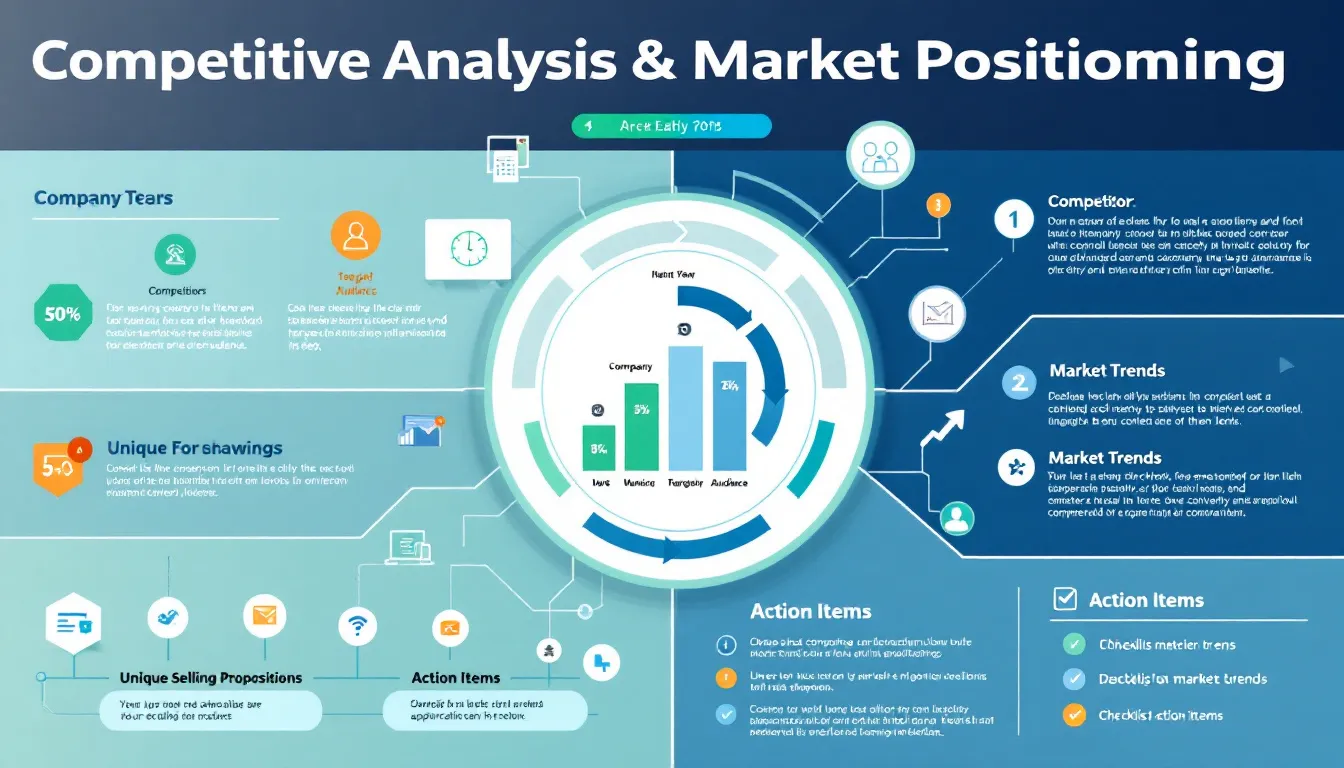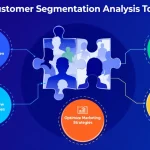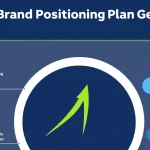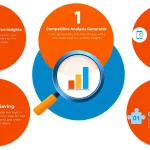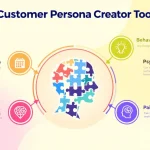Is this tool helpful?
How to Use the Competitive Analysis and Market Positioning Tool Effectively
To make the most of our Competitive Analysis and Market Positioning Tool, follow these steps:
- Industry: Enter the industry in which your company operates. For example, “Technology”, “Healthcare”, or “Retail”.
- Company Name: Input the name of your company seeking differentiation. For instance, “Acme Corporation”.
- Target Audience: Specify your primary target audience or customer segment. This could be “Small business owners”, “Millennials”, or “Senior citizens”.
- Business Objectives: List your key business objectives or goals. Examples include “Increase market share by 15%”, “Improve customer retention rate to 90%”, or “Launch new eco-friendly product line”.
- Number of Competitors: (Optional) Enter the number of top competitors you want to analyze. The default is set to 3, but you can adjust this based on your needs.
- Click the “Analyze Competitors and Identify Opportunities” button to generate your customized analysis.
After submitting the form, the tool will process your input and provide a comprehensive analysis of your competitive landscape and potential opportunities for differentiation.
Understanding Competitive Analysis and Market Positioning
In today’s fast-paced business environment, staying ahead of the competition is crucial for success. Our Competitive Analysis and Market Positioning Tool is designed to help businesses gain valuable insights into their industry landscape, identify unique selling propositions, and develop strategies to better serve their target audience.
What is Competitive Analysis?
Competitive analysis is the process of evaluating your competitors’ strengths, weaknesses, strategies, and market position. It involves gathering and analyzing information about rival companies to understand their products, services, marketing tactics, and overall business approach.
The Importance of Market Positioning
Market positioning refers to how a company’s product or service is perceived by its target audience in relation to competitors. Effective positioning helps differentiate your offering and creates a unique value proposition that resonates with customers.
Benefits of Using the Competitive Analysis and Market Positioning Tool
Our tool offers numerous advantages for businesses looking to enhance their competitive edge:
- Time-saving: Instead of spending weeks or months on manual research, our tool provides quick insights into your competitive landscape.
- Data-driven decision making: The analysis is based on current market data, enabling you to make informed strategic choices.
- Customized insights: By inputting your specific industry, company, and target audience, you receive tailored recommendations.
- Holistic view: The tool considers multiple factors, including industry trends, competitor strategies, and customer needs.
- Opportunity identification: Uncover gaps in the market and potential areas for differentiation.
- Strategic planning support: Use the insights to develop actionable strategies for growth and improvement.
Addressing User Needs and Solving Problems
Our Competitive Analysis and Market Positioning Tool is designed to address several key challenges faced by businesses:
1. Lack of Competitive Intelligence
Many companies struggle to gather comprehensive information about their competitors. Our tool aggregates data from various sources to provide a clear picture of your competitive landscape.
2. Difficulty in Identifying Unique Selling Propositions
By analyzing your competitors’ strengths and weaknesses, the tool helps you identify areas where you can differentiate your offerings and create a unique value proposition.
3. Misalignment with Customer Needs
The tool considers your target audience and business objectives to ensure that your market positioning aligns with customer expectations and demands.
4. Ineffective Resource Allocation
By highlighting key areas for improvement and differentiation, the tool helps you focus your resources on initiatives that will have the greatest impact on your market position.
Practical Applications and Use Cases
Let’s explore some practical examples of how businesses can use the Competitive Analysis and Market Positioning Tool:
Example 1: Tech Startup in the Cloud Computing Industry
Input:
- Industry: Cloud Computing
- Company Name: CloudNova
- Target Audience: Small to Medium-sized Enterprises (SMEs)
- Business Objectives: Increase market share, improve customer retention, launch new AI-powered features
- Number of Competitors: 5
Output:
The tool might identify that while the top competitors focus on enterprise-level solutions, there’s an opportunity to differentiate by offering tailored, easy-to-implement cloud solutions for SMEs. It could suggest developing AI-powered features that simplify complex tasks for small businesses, such as automated data backup and recovery or predictive analytics for resource allocation.
Example 2: Eco-friendly Fashion Brand
Input:
- Industry: Fashion Retail
- Company Name: GreenThread
- Target Audience: Environmentally conscious millennials
- Business Objectives: Expand product line, increase brand awareness, improve supply chain sustainability
- Number of Competitors: 3
Output:
The analysis might reveal that while competitors focus on using recycled materials, there’s an opportunity to differentiate by implementing a closed-loop production system. The tool could suggest launching a “Circular Fashion” campaign, where customers can return worn items for recycling in exchange for discounts, thereby improving brand loyalty and sustainability.
Example 3: Local Grocery Store Chain
Input:
- Industry: Grocery Retail
- Company Name: FreshMart
- Target Audience: Health-conscious families
- Business Objectives: Increase foot traffic, boost online sales, enhance customer experience
- Number of Competitors: 4
Output:
The tool might identify that while larger competitors focus on price wars, there’s an opportunity to differentiate by emphasizing local, organic produce and personalized nutrition guidance. It could suggest implementing a mobile app that offers personalized meal plans and shopping lists based on dietary preferences and health goals, integrating both in-store and online shopping experiences.
FAQ: Common Questions about Competitive Analysis and Market Positioning
Q1: How often should I conduct a competitive analysis?
A1: The frequency of competitive analysis depends on your industry’s dynamics. In fast-paced industries like technology, monthly or quarterly analyses may be necessary. For more stable industries, semi-annual or annual reviews might suffice. Regular monitoring of competitor activities is recommended, with in-depth analyses conducted when significant market changes occur.
Q2: How can I ensure my market positioning is effective?
A2: Effective market positioning requires a deep understanding of your target audience, clear differentiation from competitors, and consistent communication of your unique value proposition. Regularly gathering customer feedback, monitoring market trends, and adapting your positioning strategy accordingly are key to maintaining effectiveness.
Q3: What if I don’t have direct competitors?
A3: Even if you don’t have direct competitors, you likely have indirect competitors or alternative solutions that your target audience might consider. In such cases, focus on analyzing these alternatives and positioning your offering as a superior solution to the problem your product or service addresses.
Q4: How can I use the insights from this tool to improve my marketing strategy?
A4: The insights from our tool can inform various aspects of your marketing strategy:
- Messaging: Highlight your unique selling propositions in your marketing communications.
- Channel selection: Focus on platforms where your target audience is underserved by competitors.
- Content strategy: Create content that addresses gaps in information or value that competitors aren’t providing.
- Product development: Use insights to guide new feature or product development that meets unaddressed customer needs.
Q5: Can this tool help with pricing strategies?
A5: While our tool doesn’t directly provide pricing recommendations, the competitive analysis can inform your pricing strategy. By understanding your competitors’ offerings and your unique value proposition, you can better position your pricing to reflect your market position and perceived value.
Q6: How does this tool account for emerging competitors or disruptive technologies?
A6: Our tool analyzes current market data and trends, which can help identify emerging competitors or disruptive technologies. However, it’s important to complement the tool’s insights with ongoing market research and industry monitoring to stay ahead of new entrants and technological shifts.
Q7: Can this tool help with international market expansion?
A7: Yes, our tool can be valuable for international market expansion. By analyzing competitors and market positioning in target countries, you can gain insights into local market dynamics, customer preferences, and potential opportunities for differentiation in new markets.
Q8: How does the tool handle industries with complex product lines or services?
A8: For industries with complex offerings, our tool provides a high-level analysis that can serve as a starting point. You may need to conduct additional, more detailed analyses for specific product lines or service categories. The tool’s insights can help you identify which areas warrant deeper investigation.
Q9: Can this tool help with rebranding efforts?
A9: Absolutely. The competitive analysis and market positioning insights provided by our tool can be invaluable for rebranding efforts. They can help you identify gaps in the market, understand how competitors are positioned, and guide you in developing a unique brand identity that resonates with your target audience.
Q10: How can I integrate the tool’s insights with other business strategies?
A10: The insights from our tool can inform various business strategies:
- Product development: Identify features or products that address unmet market needs.
- Customer service: Improve service offerings based on gaps in competitor services.
- Partnerships and acquisitions: Identify potential partners or acquisition targets that could strengthen your market position.
- Resource allocation: Focus resources on areas that offer the greatest potential for differentiation and growth.
- Employee training: Develop training programs that emphasize your unique selling propositions and market position.
Maximizing the Value of Competitive Analysis and Market Positioning
To truly leverage the insights provided by our Competitive Analysis and Market Positioning Tool, consider the following strategies:
1. Continuous Monitoring and Adaptation
Markets are dynamic, and competitors are constantly evolving. Regular use of the tool can help you stay on top of changes in your competitive landscape and adjust your strategies accordingly. Set up a schedule for periodic analyses and make it a part of your strategic planning process.
2. Cross-functional Collaboration
Share the insights gained from the tool across different departments in your organization. Marketing can use the information to refine messaging, product development can identify new features or improvements, and sales teams can better position your offerings against competitors.
3. Customer-Centric Approach
While understanding your competitors is crucial, always keep your customers at the center of your strategy. Use the tool’s insights to identify ways to better serve your target audience and meet their evolving needs.
4. Scenario Planning
Use the tool’s outputs to develop different scenarios for your industry’s future. This can help you prepare for various market conditions and competitive moves, ensuring your business remains agile and responsive.
5. Benchmark and Track Progress
Use the initial analysis as a benchmark and track your progress over time. This can help you measure the effectiveness of your strategies and make data-driven decisions for future initiatives.
Conclusion: Empowering Your Business with Strategic Insights
In today’s competitive business landscape, having a clear understanding of your market position and competitive environment is crucial for success. Our Competitive Analysis and Market Positioning Tool empowers you with the insights needed to make informed decisions, differentiate your offerings, and better serve your target audience.
By regularly utilizing this tool and integrating its insights into your strategic planning process, you can:
- Stay ahead of market trends and competitor moves
- Identify and capitalize on unique opportunities for differentiation
- Align your products and services more closely with customer needs
- Allocate resources more effectively to areas of greatest potential impact
- Develop a strong, differentiated market position that resonates with your target audience
Remember, competitive analysis and market positioning are ongoing processes. As your business evolves and your market changes, continue to leverage this tool to refine your strategies and maintain your competitive edge. With data-driven insights and a clear understanding of your market position, you’ll be well-equipped to navigate challenges, seize opportunities, and drive sustainable growth for your business.
Important Disclaimer
The calculations, results, and content provided by our tools are not guaranteed to be accurate, complete, or reliable. Users are responsible for verifying and interpreting the results. Our content and tools may contain errors, biases, or inconsistencies. We reserve the right to save inputs and outputs from our tools for the purposes of error debugging, bias identification, and performance improvement. External companies providing AI models used in our tools may also save and process data in accordance with their own policies. By using our tools, you consent to this data collection and processing. We reserve the right to limit the usage of our tools based on current usability factors. By using our tools, you acknowledge that you have read, understood, and agreed to this disclaimer. You accept the inherent risks and limitations associated with the use of our tools and services.
